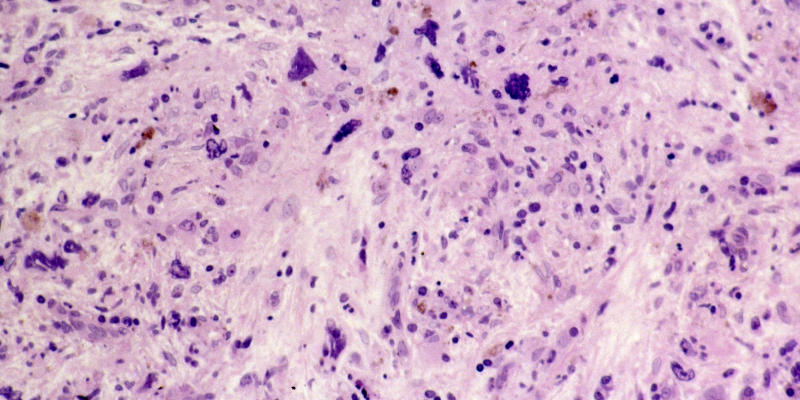
An analysis of a cohort of patients with myelofibrosis (MF) found that the combination of navitoclax and ruxolitinib reduced MF-associated splenomegaly, according to a presentation at the 2022 American Society of Hematology Annual Meeting.
The findings also indicate potential disease modification with the combination regimen, according to the investigators, led by Francesco Passamonti, MD, of the Circolo Hospital and Macchi Foundation in Varese, Italy.
MF pathogenesis usually involves a driver mutation of JAK2, CALR, or MPL. The high-molecular-risk (HMR) mutations ASXL1, EZH2, SRSF2, IDH1/2, and U2AF1 p.Q157 are often associated with worse prognosis. Two factors are key to disease modification: reduction in variant allele frequency (VAF) of driver mutations and reversal of bone marrow fibrosis (BMF).
The current standard of care for MF is the Janus kinase inhibitor (JAKi) ruxolitinib. The phase II multicenter REFINE study recently found evidence of disease modification when adding navitoclax to ruxolitinib in patients who previously had suboptimal responses to ruxolitinib alone. This subsequent analysis examined whether the type of MF and risk status affected outcomes and disease modification. All of the patients in the cohort (N=32; median age, 69 years; range, 44-83) had primary or secondary MF with splenomegaly and had not received any prior JAKi treatment. Of those, 22 (69%) had the JAK2 driver mutation, six (19%) CALR, three (9%) the MPL, and one (3%) was triple negative. Nineteen (59%) patients had HMR mutations.
Patients received daily navitoclax either 100 mg or 200 mg and ruxolitinib twice daily dependent upon baseline platelet count. The researchers assessed spleen volume reduction, as well as secondary endpoints of reduction in BMF and VAF.
At week 24, spleen volume reduction of ≥ 35% was observed in all high-risk subgroups (older age, high score on prognosis tool, and HMR mutation). In addition, nine of 26 evaluable patients experienced BMF improvement of one grade or more, seven of whom had an HMR mutation. Two patients had complete resolution of BMF, with a median time to BMF improvement of 12.3 weeks (range, 12.1-24.1). Finally, 14 of 28 evaluable patients had a reduction in driver gene JAK2V617 mutation VAF more than 20% from baseline at week 12 or 24.
“The reduction in BMF and VAF for the driver mutation JAK2V617 is encouraging and suggestive of evidence of disease modification with the combination of navitoclax and ruxolitinib,” the investigators concluded.
Reference
Passamonti F, Foran JM, Tandra A, et al. The combination of navitoclax and ruxolitinib in JAK inhibitor-naïve patients with myelofibrosis mediates responses suggestive of disease modification. Abstract #237. Presented at the 64th ASH Annual Meeting and Exposition; December 10-13, 2022; New Orleans, Louisiana.






 © 2025 Mashup Media, LLC, a Formedics Property. All Rights Reserved.
© 2025 Mashup Media, LLC, a Formedics Property. All Rights Reserved.